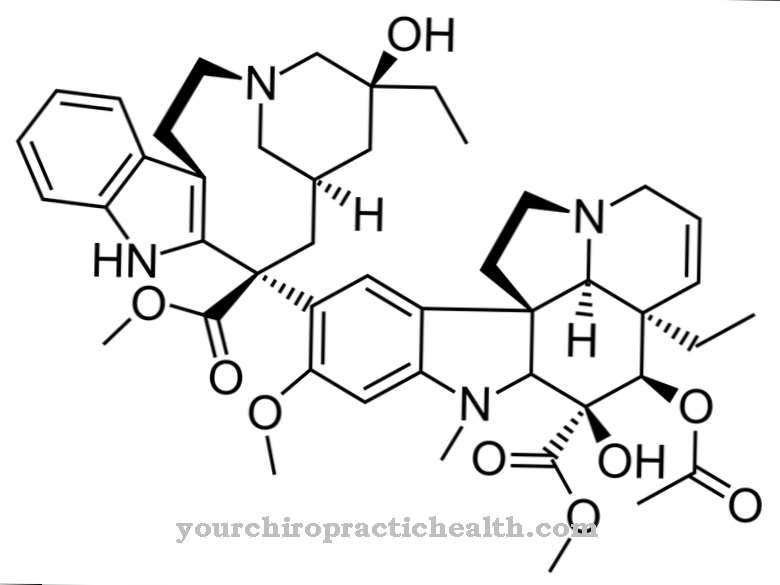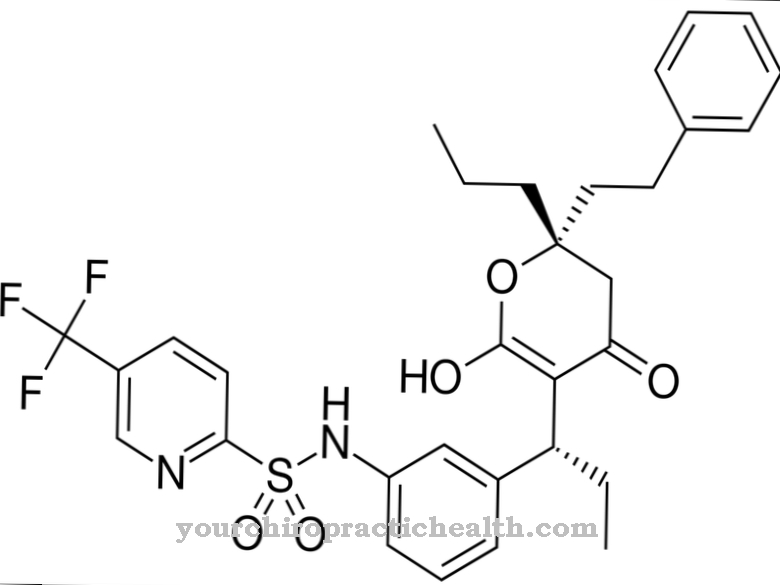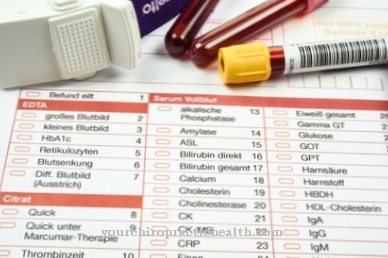Trifluperidol belongs to the class of typical neuroleptics. It was mainly used against manias and schizophrenia. Today it is rarely used.
What is trifluperidol?

Typical neuroleptics are the generation of older neuroleptics that were used before the discovery of the active ingredient clozapine in 1979, but are rarely used today due to their strong side effects. Trifluperidol belongs to this group. Chemically speaking, trifluperidol is a butyrophenone and related to haloperidol (Haldol®). It is a very strong antipsychotic drug that was developed by Janssen Phamaceutica in 1959.
While haliperidol is still widely used due to its highly potent antipsychotic effect, comparative studies have shown that although trifluperidol has stronger side effects, it does significantly worse in terms of effectiveness. Because of this, interest in trifluperidol has decreased significantly. Many experts are of the opinion that it should no longer be relevant in psychiatric practice today, since more effective drugs are available that have significantly fewer side effects.
The use of trifluperidol was mainly in the United States. The administration took place either in tablet form or as a depot syringe, with depot syringes being preferred, since patients were rather unwilling to take the drug voluntarily due to the severe side effects.
Pharmacological effect
Trifluperidol is a so-called dopamine antagonist. Most scientists assume that psychotic symptoms, such as those that can occur in mania and schizophrenia, can be traced back to an imbalance in the dopamine balance in the synaptic cleft. Dopamine is a neurotransmitter that functions as a carrier of information between nerve cells. If there is too much dopamine in the synaptic gap, this leads to overstimulation and as a result to psychotic symptoms such as hallucinations, thought disorders, ego disorders and paranoid delusions, which can be of varying severity.
Trifluperidol docks with the dopamine receptors in the central nervous system, especially with the so-called D2 receptors. This is to prevent too much dopamine from showering the nerve cells. Rather, the goal is a balance in the area of neurotransmitters. It is hoped that this will in turn reduce psychotic symptoms. However, like all psychotropic drugs, trifluperidol not only affects certain metabolic processes in the brain, but also affects the entire body, as it is in the bloodstream when administered.
The result is that the administration of trifluperidol also has effects on the so-called basal ganglia, for example. These are nuclei located below the cerebral cortex, which are responsible for motor skills, but also play a significant role in affects, personal will, spontaneity, etc.
The heart, hormonal balance, sexual functions, kidneys, etc. can also be affected by the administration of neuroleptics (typical and atypical). So far, there are no psychotropic drugs that only act on specific locations in the brain. As a result, a number of side effects must be expected.
Medical application & use
In psychiatric practice, trifluperidol is / was mainly used against psychotic symptoms in the context of manic or schizophrenic diseases. These can include delusions, ego disorders, affect disorders, formal thought disorders, etc. Organically caused psychoses can also be treated with the drug under certain circumstances. Organically caused psychoses can be physically justified and can be caused, for example, in a brain tumor or in a traumatic brain injury. Since the symptoms are similar to those of a manic or schizophrenic psychosis, trifluperidol can therefore be indicated.
Further areas of application of trifluperidol are psychomotor agitation, agitation in the context of a mental disability or in the context of an autism spectrum disorder as well as nausea and vomiting. In rare cases, trifluperidol is also used to treat tic disorders. This is due to the fact that trifluperidol, as a highly potent neuroleptic, also has a sedating effect.
Between 2.5 and 16 mg of the active ingredient are administered. The optimal dose varies from patient to patient, although higher doses are usually administered in acute psychotic episodes than in other indications.
In addition to its use in acute psychotic episodes, trifluperidol is / was also used to prevent the same. While the sedative effect sets in immediately, the antipsychotic effect takes a few days or weeks. Regular use of the drug can help prevent relapse by keeping dopamine levels in the synaptic gap in balance.
You can find your medication here
➔ Medicines to calm down and strengthen nervesRisks & side effects
Trifluperidol is one of the most potent neuroleptics. However, it is also a drug that usually has very serious side effects. The so-called extrapyramidal motor disorders (EPMS), which can include Parkinson's-like symptoms, sitting and movement restlessness, and early and late dyskinesia, should be mentioned in particular. Early and late dyskinesias are involuntary twitching in the throat and tongue area, which are often irreversible and cause particular suffering in patients. It was found that these extrapyramidal motor disorders occur particularly often and severely with the administration of trifluperidol.
Drug-induced depression is also a regular consequence, as well as hormonal disorders, seizures, blood count disorders and headaches. In rare cases, a so-called neuroleptic malignant syndrome can be caused by the drug, which can be life-threatening and requires immediate medical intervention and discontinuation of the drug.
Because of these side effects, which are not in good proportion to the positive effect, trifluperidol is an unpopular drug that has long been replaced by others.



























